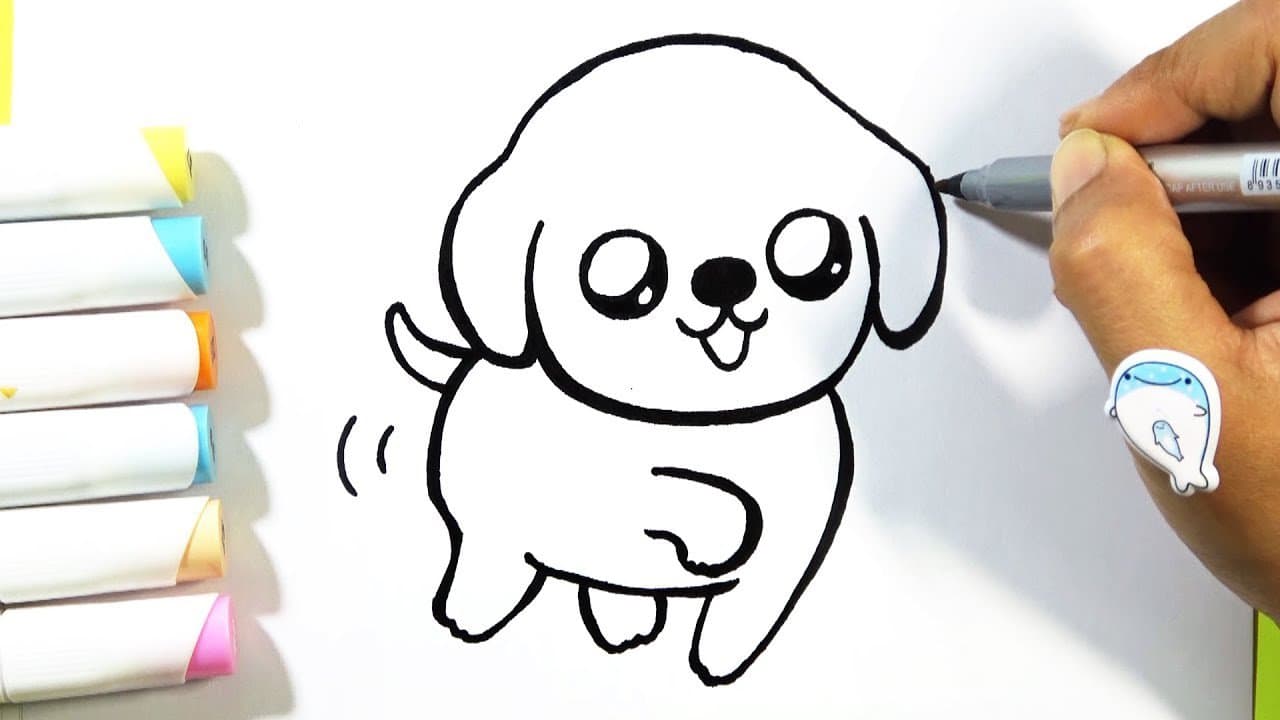Easy Puppy Drawing for Creative Families
Hello, sweet parents and budding artists! Are you looking for a fun and engaging activity to enjoy with your little ones? Look no further, because today, we are embarking on a delightful journey into the world of art with an easy puppy drawing tutorial!
Drawing is not just a way to create pretty pictures; it’s a magical bridge to spending quality time with your family, enhancing coordination, and boosting creativity in your children (and maybe even in you!). So, let’s wag our tails in excitement and learn to draw the cutest pups around!
Materials You’ll Need
Before we dive nose-first into drawing, let’s sniff out the materials you’ll need to bring your puppy to life:
- A sketchbook or any plain paper
- Pencil (HB or 2B is ideal for sketching)
- Eraser (for those tiny oopsies)
- Colored pencils or crayons (to bring your puppy into the colorful world)
With your art supplies ready, prepare to unleash your family’s artistic talent!
Step-by-Step Puppy Drawing Guide
Let’s start with simple shapes and lines to build our puppy. Drawing can sometimes seem ruff, but with these easy-to-follow steps, you will create a masterpiece in no time!
Step 1: Sketching the Head and Body
Fetch your pencil, and let’s start with our puppy’s head. Draw a circle for the head and an oval for the body. Remember, it doesn’t need to be perfect; after all, every pup is unique!
Step 2: Adding the Facial Features
Gaze into your puppy’s eyes by drawing two smaller circles within the head. Add two dots for the nose and a wiggly line for a happy mouth. Let’s not forget those floppy ears – draw two curved lines at the top of the head.
Step 3: Crafting the Legs and Tail
Our puppy needs legs to leap with joy! Draw two oval shapes for the front legs and two more for the back legs. A puppy’s tail is its flag of happiness, so add a little curved line at the back of the body for a wagging tail.
Want to see how it looks so far? Click here for an illustrated example to guide you through each step.
Practice Makes Paw-fect!
Remember, practice is important when it comes to drawing. Each stroke you make adds to your experience. Encourage your children to keep trying even if their first puppy doesn’t turn out exactly how they wanted. Art is all about expression and growth, not just perfection.
Ready, Set, Draw!
And there you have it, the start of an easy puppy drawing that you and your family can enjoy creating together. Keep following these simple steps, and before you know it, you’ll have a whole pack of playful puppies on your page. Stay tuned for more tips and tricks to add fur textures, shading, and even more personality to your puppy drawings. Most importantly, have a paw-some time drawing and creating memories! Happy drawing!

5 Things Parents Should Know Before Starting an Easy Puppy Drawing
Before you and your little ones get started on drawing an easy puppy, here are five helpful tips for a smooth and enjoyable drawing experience:
1. Relax and Have Fun
The most crucial tip is to relax. Drawing together should be a stress-free and enjoyable experience. Do not worry about making everything perfect. The joy is in the creativity and the memories you are making.
2. No Pressure to be ‘Artists’
It’s OK if you or your kids have never drawn before. This activity is about exploring creativity and spending time together, not about creating a gallery-worthy piece (but who knows, maybe you will!).
3. Embrace Imperfections
Your puppy drawings won’t look the same, and that’s the beauty of art. If your child’s puppy has one ear bigger than the other or a lopsided tail, that’s perfectly fine. It’s these little quirks that make each drawing special and memorable.
4. Adjust the Drawing to Your Child’s Age and Skill Level
Feel free to simplify the drawing steps for younger children or add more details for older children who want more of a challenge. You can let them add a background, a collar with a tag, or even some toys for the puppy.
5. Use Examples for Guidance, Not for Comparison
While it can be helpful to look at examples, remind your children to use them as a guide rather than a strict standard to compare their work to. Encourage them to put their personal touch on their drawing.
The Many Benefits of Drawing with Your Family
Believe it or not, drawing together as a family offers numerous benefits:
- It fosters a sense of togetherness and teamwork.
- Art activities can improve hand-eye coordination and fine motor skills.
- It’s an excellent outlet for self-expression and communication.
- Drawing can be a calming activity that helps manage stress.
- It encourages creative thinking and problem-solving.
Keep these benefits in mind as you create, and watch the magic that unfolds when your family gathers for a shared creative adventure!
Tips for Encouraging Creativity in Your Children
As a parent, you play a crucial role in encouraging your children’s creativity. Here are a few simple ways to do so:
- Ask your children to tell you a story about their drawing. What is the puppy’s name? What’s its favorite game?
- Display their artwork proudly at home to boost their confidence.
- Keep art supplies accessible and let them doodle and draw whenever they feel inspired.
- Join in and draw with them. Children love when parents engage in their activities.
- Encourage them to explore different mediums, such as painting or sculpting, to expand their artistic horizons.
Showcasing Your Child’s Artwork
Once your puppy drawings are complete, why not create an art show at home? Dedicate a space on the wall or a bulletin board where your child’s artwork takes center stage. This not only celebrates their effort but also inspires them to keep creating. It’s a wonderful way to conclude your drawing session!
See more great Things to Do with Kids in New Zealand here. For more information see here
Disclaimer
The articles available via our website provide general information only and we strongly urge readers to exercise caution and conduct their own thorough research and fact-checking. The information presented should not be taken as absolute truth, and, to the maximum extent permitted by law, we will not be held liable for any inaccuracies or errors in the content. It is essential for individuals to independently verify and validate the information before making any decisions or taking any actions based on the articles.




